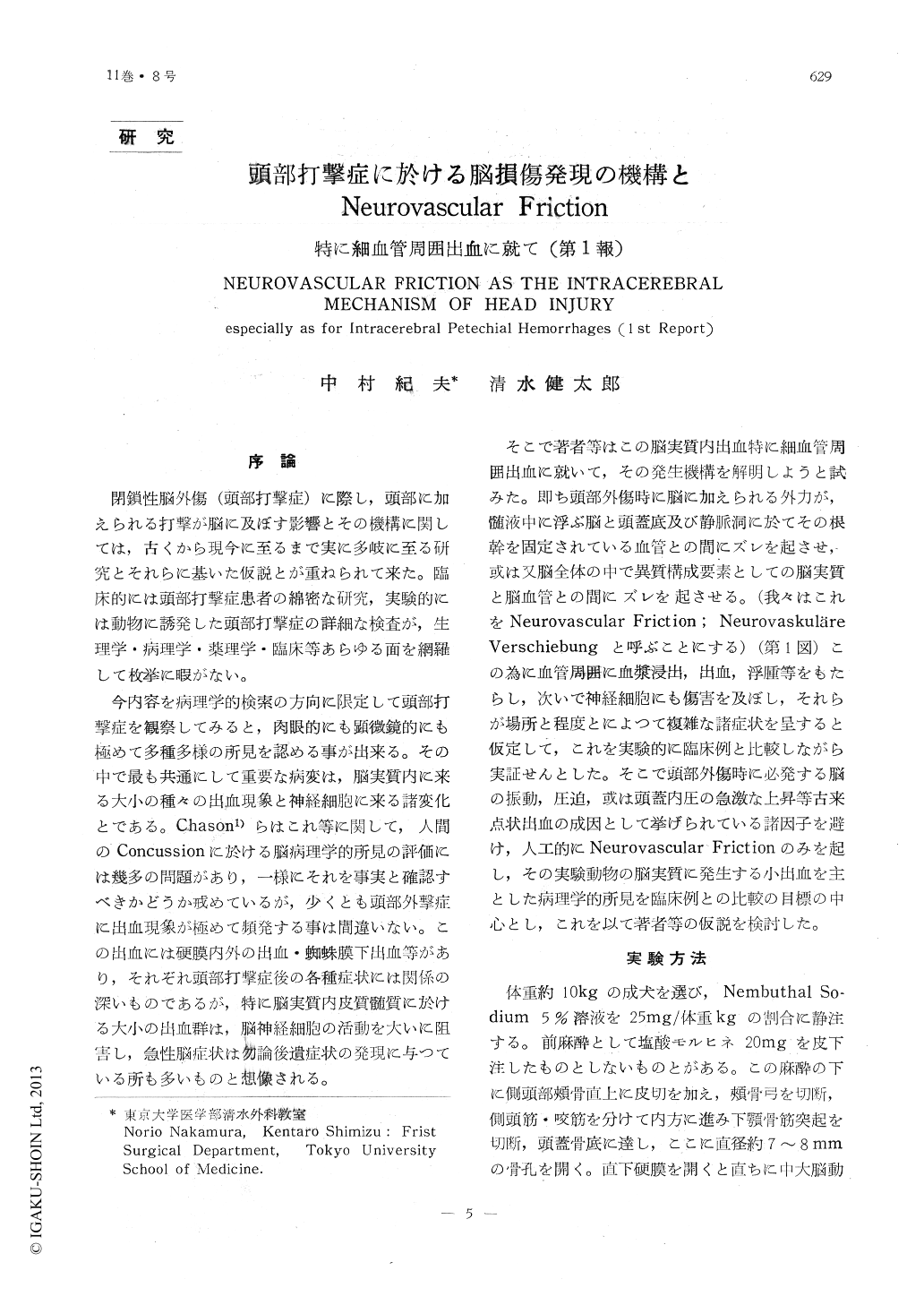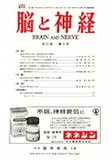Japanese
English
- 有料閲覧
- Abstract 文献概要
- 1ページ目 Look Inside
序論
閉鎖性脳外傷(頭部打撃症)に際し,頭部に加えられる打撃が脳に及ぼす影響とその機構に関しては,古くから現今に至るまで実に多岐に至る研究とそれらに基いた仮説とが重ねられて来た。臨床的には頭部打撃症患者の綿密な研究,実験的には動物に誘発した頭部打撃症の詳細な検査が,生理学・病理学・薬理学・臨床等あらゆる面を網羅して枚挙に暇がない。
今内容を病理学的検索の方向に限定して頭部打撃症を観察してみると,肉眼的にも顕微鏡的にも極めて多種多様の所見を認める事が出来る。その中で最も共通にして重要な病変は,脳実質内に来る大小の種々の出血現象と神経細胞に来る諸変化とである。Chason1)らはこれ等に関して,人間のConcussionに於ける脳病理学的所見の評価には幾多の問題があり,一様にそれを事実と確認すべきかどうか戒めているが,少くとも頭部外撃症に出血現象が極めて頻発する事は間違いない。この出血には硬膜内外の出血・蜘蛛膜下出血等があり,それぞれ頭部打撃症後の各種症状には関係の深いものであるが,特に脳実質内皮質髄質に於ける大小の出血群は,脳神経細胞の活動を大いに阻害し,急性脳症状は勿論後遺症状の発現に与つている所も多いものと想像される。
1) The most important common pathologi-cal findings of injured brains are multiple petechial hemorrhages and neuronal damages.
As for the hemorrhages, the authors cal-culated that the friction of the wall of the vessels against the surrounding brain tissue at the time of impingement, neurovascular friction, (Neurovaskuläre Verschiebung) would cause these petechial hemorrhages, and ac-cording to localization and extent of the pro-cess, various clinical signs and symptornes of the head injury ensue.
This neurovascular friction may occure from the following basis.
i) Intracranial vessels are fixed at the base of the skull or the dural sinus, while the brain substance is floating in the cerebro-spinal fluid.
ii) The physical constitution of both tis-sues is quite different from each other. So are the strain or shift of these structures at the time of blow.
2) The authors wanted to confirm these hypothesis by experiments using dogs. Thro-ugh temporal approach, the middle cerebral artery was exposed and briskly pulled by a hook, so causing pure friction between ves-sels and nervous substance.

Copyright © 1959, Igaku-Shoin Ltd. All rights reserved.


